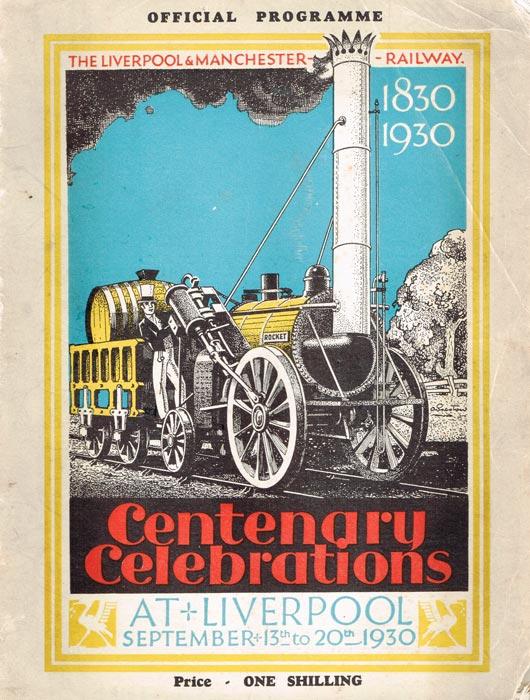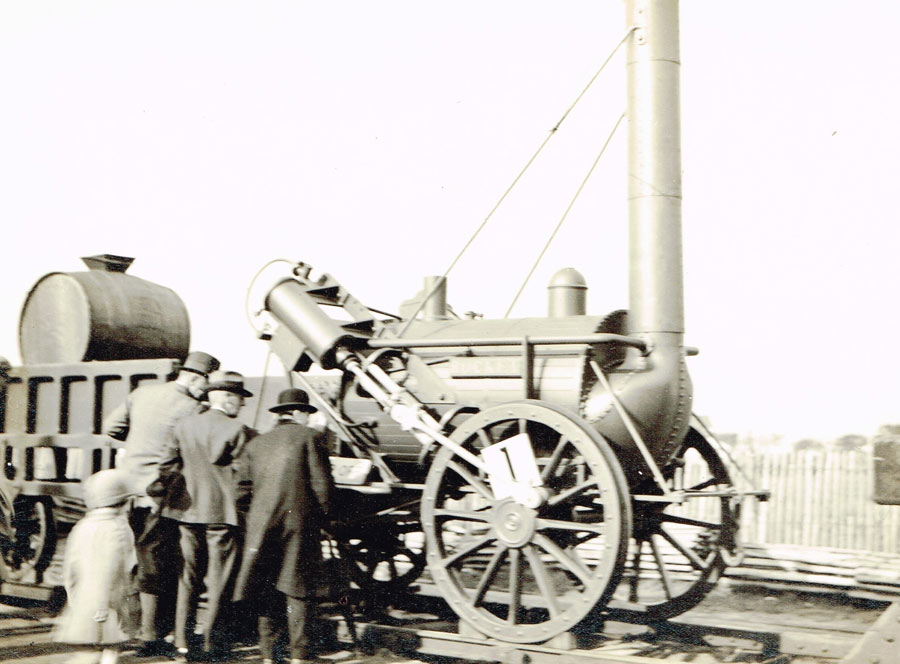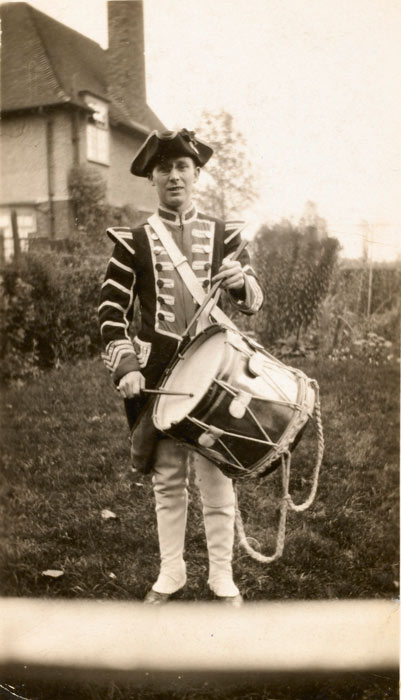The Centenary of the Liverpool and Manchester Railway

They don’t do celebrations like this any more!
The Mystery in Liverpool is a large expanse of grassy park used by cross country runners and Saturday football teams, joggers and strollers alike. It is so named ‘The Mystery’ because of the circumstances surrounding its donation to Liverpool Corporation in 1895. A report in the Liverpool Mercury, August 23, 1895 recorded that:
"...in about a fortnights time the youth of Liverpool, through the generous action of a gentleman who prefers to avoid public recognition of his generosity, will be provided with a playground suitable for almost any outdoor recreation, and which, in its healthy situation and excellence of arrangement, is likely to become one of the most popular holiday resorts of the city. The large area of ground which lies between Smithdown Rd and Wavertree, High St, bounded on the east by a section of the London and North Western Railway, is fully 108 acres in extent."
The donor was later identified as Philip Holt, from the Holt shipping family.
Many and varied events have taken place in the park (also known as Wavertree Playground). Probably the most spectacular and the one that resonates most because of my job as Curator of Land Transport, was the Centenary Celebrations of the Liverpool and Manchester Railway in 1930. The programme booklet for the centenary celebrations is about an inch thick and full of fascinating adverts from the time. Liverpool Corporation Tramways and Motor Omnibuses advertised special services to the Railway Fair and Pageant at Wavertree while the Liverpool Gas Company claimed women of the 1930s have a much easier time than their predecessors of 1830 – because they have a modern gas cooker to use!
The programme of celebrations took place from 13 to 20 September 1930. The Railway Exhibition in St George’s Hall was open until 10pm every day showing "models, miniature railway and historical and pictorial matter" designed to "show a complete conspectus of the evolution of railways from the beginning to the present day." It was considered the finest collection of its kind ever assembled, so much so that there was a 60 page illustrated exhibition catalogue to accompany it.
Lime Street and St George's Plateau were decorated for the occasion with a large celebratory arch and banners on masts in the surrounding streets. An illuminated tramcar toured the city nightly bearing a reproduction of Rocket locomotive in coloured lights.
On Saturday 13 September at 12 noon the American Ambassador, His Excellency Brigadier-General Charles Gate Dawes, declared the celebrations open. His speech and that of the Lord Mayor of Liverpool, Edwin Thompson, were broadcast nationally.
The main event of the celebrations was the Railway Fair at The Mystery. It was open daily from 10am until 11pm.

Rocket (a replica built in 1911), North Star and our very own Lion were amongst 34 railway locomotives and items of rolling stock exhibited on the showground.
The Engineer magazine of November 14, 1930 reported that:
"...perhaps the most interesting feature of the Liverpool and Manchester Railway Centenary Celebration... was the 'Train of 1830' drawn by the reconstructed 'Lion', which carried passengers round a circular railway specially laid down at the Wavertree ground."
The two carriages pulled by Lion on this occasion were replicas of the originals and built by LMS especially for the event.
Alongside the displays and railway trips a fabulous Programme of Amusements was planned with the pinnacle being the Pageant of Transport. This took place daily at 7.30pm with matinees at 3pm on Saturdays. It is listed as "the significant and crowning event of the celebrations" taking place on a 100 yard long stage enacted by 4,000 performers - yes 4,000 - and the vast majority of them are named individually in the programme!

Mr HA Serjent was a member of the Wavertree Subscription Silver Band, who all dressed as the 4th Regiment of the King’s to perform as the stage band for the Pageant.
The Pageant covered the evolution of transport from its earliest forms, including a caveman dragging a woman along by her hair, to the present day (1930). Not something that would be acceptable to us today but it is described thus:
"The earliest form of human transport consisted of a person carrying or dragging objects of food, fuel or domestic necessities, the weight of which was within his capacity. A cave man armed with a heavy club, drags his bride home by the hair of the head. Other cave dwellers follow in pursuit, armed with stone age weapons. (Orchestra: Entry to the Gods into Valhalla – Wagner)."
The caveman was played by Mr Cecil Mason and his poor wife by Miss Paddie O’Hara.
The Pageant ran through 24 episodes including Earliest Forms of Transport, The Pack Horse Days, Liverpool in 1830 and The Fight Against Progress, followed by a finale where all participants reassembled and sang Jerusalem and God Save the King. It must have been a rather long but rousing affair.
There was also a vaudeville show, fireworks every night at 9.30pm, music and refreshments. Quite oddly there was also a marathon race on 17 September ending in the park.
Railway Workers Day also took place on 17 September with a ‘Pageant of Liverpool’s Industries’ presented by employees of the London Midland & Scottish Railway Company. It was opened by the Railway Queen, Miss Molly Brown at 3pm. Two other Railway Queens were in attendance, namely Miss Ena Best (LNER) and Miss Mabel Kitson (GWR), along with their retinues.
I have a lovely letter from a lady who as a child was in the retinue of one of the three railway queens. She remembers lots of waiting around and then assembling for a many-course meal and telling her parents afterwards that she had had seven dinners!
All in all an incredible celebration, but one fitting such a momentous event - the centenary of the first modern railway. I only wish I had been strolling through the park in 1930 to witness the spectacle in all its glory.
